#full blog
Explore tagged Tumblr posts
Text
Fiona: Beauty and Beast

Fiona is one of many iconic characters in the Shrek franchise that deserves her own blog post. Shrek has a central theme of embracing difference, and Fiona’s journey within this concept is a powerful example of the way one woman navigates the reductive, romanticized, and incessant demands of hegemonic femininity by embracing her flaws. As we follow Fiona on her journey through bodily horror, marriage expectations, and self-acceptance, it’s clear that Fiona’s message is one that attempts to reject societal expectations of women– though her resistance is not without its limits.
Female characters, especially those in film, tend to reveal much about the creators of the film, and the film’s intended audience. It is rare, however, that films discuss femininity in a way that is authentic to the experiences of real women and treats them as whole, complex characters.
Film critic Laura Mulvey discusses this concept in her piece “Visual Pleasure and Narrative Cinema,” where she explains in detail the social dynamics Fiona tries so hard to subvert. She writes, “Traditionally, the woman displayed has functioned on two levels: as erotic object for the characters within the screen story, and as erotic object for the spectator within the auditorium, with a shifting tension between the looks on either side of the screen” (62). In other words, femininity is always represented in a sexualized way, though that sexuality is never in control of the female subject of the movie. Instead, a female character is erotic in the way that she is written and directed by the filmmakers, and often as a result of this, becomes an erotic object for viewers of the movie to consume.
At first, Fiona appears to fall into this stereotype fairly viciously. She is turned into a monster, which presents a conflict because her newfound ugliness hurts her marriage prospects. Marriage is a central part of Fiona’s character, because she is a fairytale princess. Even while she is depicted as a monster, she sometimes appears through camera angles that zoom in on her body in a sexual manner, focusing on her legs, breasts, and flowing hair. She also always wears her crown, has good posture, and dainty habits while she is an ogre, distinguishing her from other ogres. Even in her monstrous form, she is presented as a sexualized object– if not for the viewer’s or filmmaker’s pleasure, than for Shrek’s. Furthermore, as Patrick Schwartz points out in his article “Transphobia in Shrek,” Fiona is often forced into a caretaker role because of her gender. Schwartz writes, “she cares for Shrek when he gets shot with an arrow in the first Shrek movie, and she must calm Donkey’s nerves in several scenarios through the films. It is never clear if Fiona truly wants to be the caretaker of both Shrek and Donkey, as there is never a scene in which Fiona is given the opportunity to make that decision” (3). Regardless of Fiona’s elements of resistance in the film, her true desires are still pushed to the side as she looks after the film’s various male characters.
Mulvey also notes that women are also othered and seen as a threat because of their assumed lack of a penis– what she designates as a “castration threat.” This subliminal fear is made only more legible by Fiona turning into a monster. In some ways, it’s her monstrosity that makes her even more of a “woman” in the eyes of hegemonic media than her human form. Massanari and Chess speak on this concept in their article “Attack of the 50-Foot Social Justice Warrior” that “the biological always folds back into the monstrous, supporting the notion that the feminized monster is always necessarily the “other” in relation to the patriarchal media it serves” (6). and yet, because femininity is already deemed monstrous by the standards of the patriarchy, it eventually turns out that embracing monstrous traits is what eventually gives Fiona her power.
Disability Studies scholars have long known that monstrosity is rich with empowerment.
As Vannah Aldridge explains in their article “Queer monstrosities: Dis/ability, Sexuality, and Gender,” “Enfreakment can be used as a source of power because dis/abled queer bodies are no longer considered ‘fractured’ or ‘incomplete,’ but instead we are extraordinary bodies that deserve space, love, and care … pleasurable pain, I argue, is the source of taking control of one’s own exploitation, therefore, turning into the queer monstrosity” (6). “Enfreakment” is a word Aldridge is using to describe the socially othering process of transforming a human into a monster, not just in a literal sense, but in social senses as well. This quote speaks deeply to the concept of a monster not being “less than” a human, but decidedly more than the definition of a “normal” human.
Fiona finds great pleasure in the pain of her monstrosity– so much, in fact, that she makes the decision to remain a monster when she could have decided to forgo this fate. Fiona’s choosing not to leave behind her monstrous form, despite the pain it’s caused her, can be an empowering message for both women and disabled people. As the article “Subverting the Monster: Reading Shrek as a Disability Fairytale” explains, Shrek “is not about people overcoming their monstrosity/disability. Instead, the film is about people overcoming societal and internalized views that disable them” (Alice, Ellis 1). By choosing love and acceptance over conventionally attractive looks and marriage, Fiona presents a feminist way of dealing with the demands of societal expectations. Though she still follows a lot of tropes about Disney princesses, Fiona distinguishes herself in one key way: she is an actual, positive feminine role model that young people can look up to.
3 notes
·
View notes
Text

#forest#nature#adventure#explore#travel#travelling#indie#vintage#fairycore#travel blog#grunge#ocean#mountains#love#aesthetic#photography#landscape#cottagecore#naturecore#inspiration#motivation#photographers on tumblr#dark acadamia aesthetic#curators on tumblr#artists on tumblr#moonlight#full moon#moon#sky#aurora borealis
29K notes
·
View notes
Text
did you know there's a day-by-day timeline of the plot in the dungeon meshi adventurer's bible and TODAY is when it all kicks off
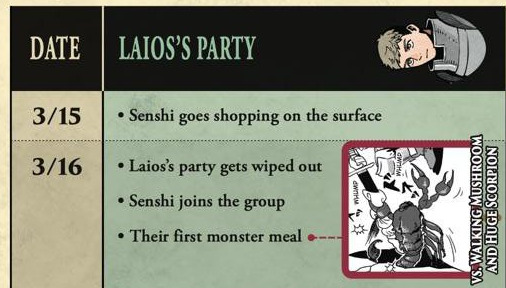
happy falin gets eaten and the gang starts eatin' day :)
#i'll put the full timeline in a reblog for other Nerds#dungeon meshi#delicious in dungeon#admittedly its early but i hadnt seen anyone post about it and someone Needed to#this thing is so thorough you could put together a reread order for a dunmeshi daily. but i didnt do that#or get a 'on this day in dungeon meshi' blog all queued up. i didnt do that either
28K notes
·
View notes
Text

#artists on tumblr#cottagecore#girl blog aesthetic#naturecore#nature#cat of tumblr#tumblr cats#cats of tumblr#cats#cat art#cat aesthetic#dark core gothique#grotesque#gothic illustration#gothic art#gothgoth#gothcore#goth aesthetic#gothic#vampire aesthetic#vampire cat#grunge#grungy aesthetic#full moon#dark acadamia aesthetic#dark academia#dark fantasy#satanism#hail satan#666 satan
5K notes
·
View notes
Text

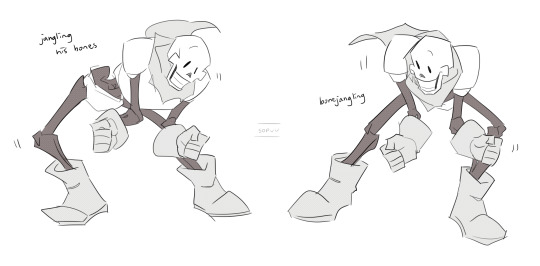
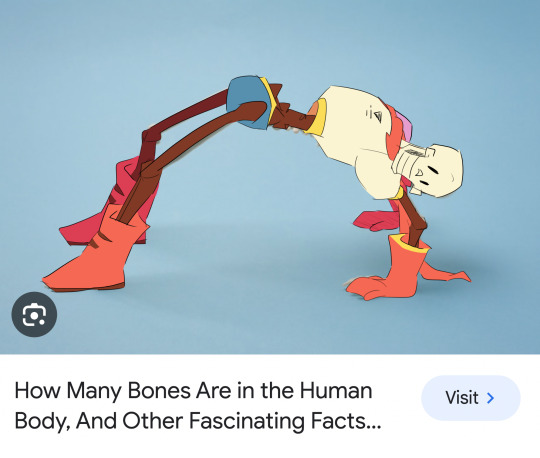

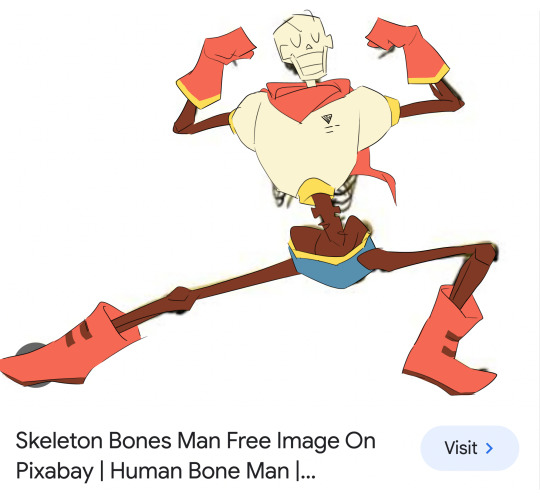
back to my undertale roots
#i thought the third stock image said skeleton bones. man free at first#sans is up next 👍🏻 soon!!#ouhhh i missed drawing them so much my boys……my all time favs#this blog has come full circle#undertale#papyrus#undertale fanart#my doodles#sopuuart#good soup
9K notes
·
View notes
Photo


This is how I feel I sound when I try to tell others about my lost media archiving
#lost media tag#hall of fame#connor o'malley#(tagging so people can find the full source video elsewhere on my blog)
68K notes
·
View notes
Text
New Mature Content Warning Overlay (And How to Get Rid of It)
More fun community label "features"! Unlike the new mandatory label for #NSFW, this one is a bigger deal to me because it affects my entire blog and it can't be avoided by just using a different tag.
Apparently on custom blog layouts, if you happen to post or reblog even a SINGLE post that's been flagged with the mature content community label, a full-page warning overlay will appear blurring out your entire blog that must be manually clicked through every single time the page is refreshed. At first I thought this was just a bug due to my older layout but I've come to realize it's not. It's a feature (as confirmed by this recent changes post) that affects all custom themes. The formatting will vary based on your own theme but here's what it looks like on my blog:

I don't know about you but I find this is stupid and annoying. If it could be dismissed once and never seen again that might be one thing, but that's not the case. The vast majority of my blog is not "mature" enough to warrant such an aggressive and invasive warning. I also think pop-ups are obnoxious in general and I'll be damned if tumblr's going to force me to have one on MY blog.
After some desperate googling for a known workaround and being unable to find even a single mention of it, I decided to take on the challenge myself. I'm not a theme coder, so apologies if there's a better way to do this, but luckily it only took me like 10 minutes to figure out a simple fix, which I'm now sharing with anyone else who may want it:
.community-label-cover__wrapper {display: none}
Just copypaste that somewhere in your CSS and goodbye pop-up!
If you're not sure how to access your theme code, check out this help article. You can also add the code via the Advanced Options menu, which is actually even better (if you can get it to work, it depends on how your theme was coded), because it will then automatically be reapplied to a lot of themes without having to remember to manually add it every time if you change your theme in the future.
Obviously this will only remove it from your own blog for anyone who may visit it. If you never want to see this warning again on other people's blogs you can also add this custom filter to your ad block:
tumblr.com##.community-label-cover__wrapper
Unfortunately I do not have an easy tutorial on hand for this one as the method will depend on your specific ad block app or extension.
Some additional notes:
After adding the theme code and saving the changes, give it a minute to update as it sometimes takes a little while for the page to refresh.
The warning overlay only seems to appear if a "mature" post is on the FIRST page of your blog, which is still annoying and makes the whole thing even more pointless and stupid because what if someone visits any other page of your blog, and oh no, happens to see "mature" content they weren't warned about?!
The warning also appears on direct links to "mature" posts.
This hack has NOTHING to do with entire blogs that have been flagged as NSFW. It only works for non-flagged blogs with custom themes that happen to have individual "mature" posts.
#I'm not letting my entire blog be penalized for a couple rare singular posts that may or may not even be 'mature' enough to warrant it#tumblr may force us to use community labels#and they may have full control over the new blogview#but MY custom blog layout has always been and always will be MINE to format and present however I want#that's the whole point#tumblr#psa#tutorial#my words#tumblr themes#wendy's help desk
17K notes
·
View notes
Text

Fat, Sexy, and Adorable🐮🔥
#ebonycurves#feedee girl#cute belly#fat slob#feedee kink#feedee encouragement#get me fatter#gaining kink#ebony domme#ebony belly#obese belly#belly blog#feedee belly#huge pregnant belly#fat belly#ebony feedee#sexy belly#belly gainer#fat black girl#belly expansion#perfect belly#full belly#belly bump#ebonygoddess#ebonybeauty#belly#fat cow
2K notes
·
View notes
Text

🐞🐞🐞🐞!!!! my tablet missed having her on it
uncropped on patreon!
#still figuring out how i want to use patreon but just want to clarify that im Not going to only post cropped stuff here and full on patreon#just if like. the cropped is prettier for the tumblr blog HAHAHAH#miraculous ladybug#ladybug#mlb fanart#paint tool sai#digital art#♡alizeh draws♡#sketch#doodles
2K notes
·
View notes
Text
“You either die the hero or see yourself live long enough to become the villain”
A classic oft-repeated quote from The Dark Knight (2008). And sadly, such is the case with Shrek. It is the second highest-grossing animated franchise of all time. And moreover, it has become the very thing it set out to destroy: the classic Disney franchise.
Think about it. It’s got the same hallmarks of Disney’s most successful properties:
Sequels
TV shows
Holiday specials
Spin-offs
Theme park attractions
Broadway musical adaptation
Though arguably falling in quality with time, each part of the Shrek franchise maintains the original key factors of the original film: its silliness, camp-like qualities, that go against the grain of traditional fairy tales and children’s media.
Perhaps no other part of the Shrek brand better embodies this than the merchandise. I mean, think about it, the fact that all this merchandise exists and persists shows the demand for it (for whatever reason).

I mean, take a look at these Shrek crocs. That’s the very definition of camp!

Shrek twinkies?? Looks gross, but they sold!! As did plenty of other Shrek foods!
But also, the fact that this merch exists also goes to show how much Shrek has turned into such a Disney-like franchise, the very thing it set out to critique in the first place.
This doesn’t even get into the fanmade unofficially licensed Shrek merch (some notable highlights include a Shrek toothpaste dispenser ((via his butt)), a Shrek fondue fountain, and various Shrek bling costing hundreds of dollars. And that’s only the PG stuff).
This leads us to what is perhaps most significant about the Shrek franchise: Shrek’s online life. Read on, if you dare.
Seriously, this is a warning.
2 notes
·
View notes
Text


#forest#nature#adventure#explore#travel#travelling#indie#vintage#fairycore#travel blog#grunge#ocean#mountains#love#aesthetic#photography#landscape#cottagecore#naturecore#inspiration#motivation#photographers on tumblr#dark acadamia aesthetic#curators on tumblr#artists on tumblr#moonlight#full moon#moon#sky#aurora borealis
7K notes
·
View notes
Text

Source
#goth#gothic#goth art#art#dark art#dark aesthetic#black and red#red aesthetic#goth aesthetic#gothgoth#grunge#dark grunge#goth blog#gothblr#gothcore#beauty in darkness#alt#alternative#cemetery#goth architecture#alternative goth#spooky art#spooky aesthetic#darkness#red art#redcore#moon#full moon#spooky#dark
4K notes
·
View notes
Text

Reblog if you would wear diaper 24/7

#ab/dl babygirl#full nappy#messy nappy#nappy lover#nappy time#poopy nappy#nappygirls#nappy change#nappyuk#thick nappy#napunk#mommy k!nk#ab/dl blog#diaper sissy#ab/dl diaper#diapered247#diaper training#diaper regression#diaper bulge#diaper gal#ab/dl caption#ab/dl community#ab/dl couple#ab/dl girl#ab/dl kink#ab/dl lifestyle#ab/dl post#ab/dl relationship#age regression#humiliation sissy
2K notes
·
View notes
Text
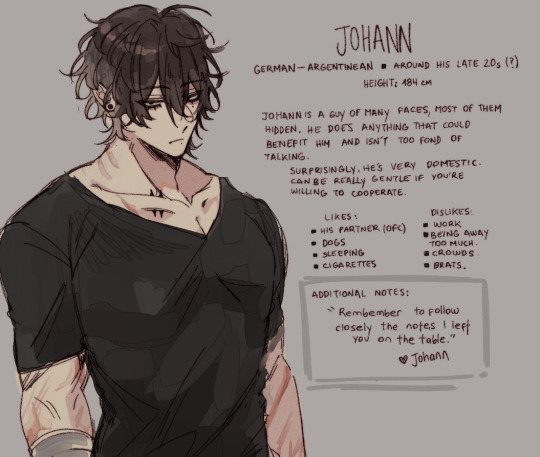
Johann's very rushed info sheet.
#Johann evolved from being my stupid sona#to now a full oc#fuck him#I'll still use him to represent myself but he isn't me anymore#He's the blog mascot now (?)#yandere oc#male yandere#yandere#original character#original drawing#johann the bastard
2K notes
·
View notes
Note
facts about you please
"You Please" is a 1978 novel by Frank Mutterbruder about a hypersexual woman's growing lust for an artist who is only interested in her as a model. The story concerns her attempts to seduce him as they grow more and more outlandish and dangerous. The book's graphic sexuality and implied cannibalism caused it to be banned in several states, though the publisher, Grovemeat Press, appealed and won at the federal level.
Mutterbruder was likely inspired by his older friend, Frankie Powers-Jovani, a famous gay artist known for his Tom-Of-Finland style works depicting men in leather with large, round muscles and other bulging parts. Powers-Jovani had worked with a model, assumed by some to be Bettie Page (though no evidence of this exists) on an unreleased series, said to have been destroyed by either Frankie or the model upon their feud.
The book departs from reality however when its protagonist, Jessica Jellie, creates a love potion to make her artist friend love her back. She mixes the potion wrong and accidentally creates a fluid capable of melting men into a delicious putty. After killing the artist, she begins melting other men and serving the putty as a sort of cake fondant that she sells under the name of "Manzipan."
Frank Mutterbruder died in 1982 when he was himself melted into putty during the Pittsburgh Play-Dough Calamity. His novel has gone largely ignored until recently, when Yorgos Lanthimos optioned it with Emma Stone to play Jessica Jellie and Colin Farrell as artist Yakov Geww.
The original printing of the novel "You Please" also won the Albert A. Gore Award for Most Recyclable Paper, but this is generally considered irrelevant to its literary significance.
#i dont know why i typed all this as an answer to that#i guess this is why i have the blog#my brain is FULL of useless made up bullshit#it just pours out sometimes#unreality
3K notes
·
View notes
Text


#lostonyoubabe#sarhoskedi#superkursunaskr#ahududuluvodka#kakaollusut#mayonezli#bokmutluyuzaqq#flowers#ozgurkedi#aesthetic#isvolim#tulip flower#flower#pink blog#pink aesthetic#pinkcore#pink#cirkinkadininutopyasi#bugeceicelim#umut bitti sigara ver#kadehsenvegece#postlarım#poets on tumblr#artists on tumblr#moon photography#photography#full moon#roses#rose#fypシ
874 notes
·
View notes